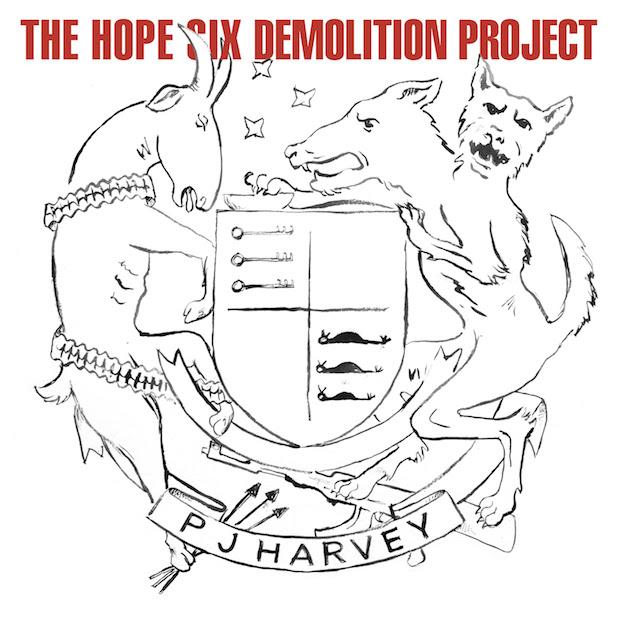Passive, preening pop music is passé – what with Kendrick Lamar’s compelling To Pimp A Butterfly soundtracking America’s resurgent Civil Rights movement and David Bowie’s Blackstar alluding to humanity’s spiritual void. Polly Jean Harvey, too, is attuned to the zeitgeist with her ninth album, The Hope Six Demolition Project (THSDP).
Since 1992’s debut, Dry, Harvey has been cast as a confessional artiste – despite her ambiguous, unsettled narratives – with a (post-)feminist consciousness. But, for 2011’s conceptual Let England Shake (LES), the Brit directly tackled geo-politics – and geo-psychology.
She assumed the role of “official war song correspondent”, chronicling the UK’s experience of conflict – from World War I to recent fighting in the Middle East. LES was hailed a masterpiece. Harvey became the only act to twice win the Mercury Prize. She was even awarded an MBE.
Now the singer/songwriter/multi-instrumentalist has reunited with longtime cohorts John Parish and Mark “Flood” Ellis for her most symbolically panoramic work. As (sonic) reporter, Harvey journeyed to Kosovo, Afghanistan and Washington DC with photographer Seamus Murphy. Harvey describes the oppression she witnessed arising from Western policy, foreign and domestic, yet does so poetically (she’s already published a related book of verse, The Hollow Of The Hand).
THSDP is a protest album, but a detached, restrained one – and all the more visceral for it. Unusually, Harvey allowed the public to observe her recording sessions during a residency in a London pop-up studio in early 2015.
The prevailing theme of THSDP is inequality – it’s like a miasma emanating from across the planet and seeping into the music. The title references the US program HOPE VI, whereby impoverished housing projects are redeveloped – resulting in urban renewal, but also (inevitably) gentrification and social cleansing.
Harvey was shown around Washington DC’s troubled Ward 7 by journo Paul Schwartzman and apparently paraphrases him in the lyrics of the jaunty opener, The Community Of Hope: “OK, now this is just drug town, just zombies.” Ironic as it is, locals have accused Harvey of being reductive.
Though THSDP’s subject matter is more expansive than LES, the music is consolidated. Stylistically, Harvey has always proven tricky to classify – her repertoire spanning folk, blues, punk, goth, grunge and avant-rock. However, THSDP is stridently rhythmic, and bottom-heavy, rather than melodic. Instead of Harvey’s now iconic autoharp, brass and sax dominate.
Several songs – including the aforementioned The Community Of Hope – follow the paradigm of LES’s The Words That Maketh Murder with its male-backed chorus, refrains, and unhewn production.
The incongruously plaintive River Anacostia, about Washington’s toxic waterway, is an anti-hymn. Harvey literally riffs off a line from the spiritual Wade In The Water – “trouble the water”. The album’s lead single, The Wheel, is deceptively blithe and carnivalesque, Harvey’s singing “Hey little children don’t disappear…” a reminder of Kosovo’s lost generations.
Still, any critiques are implied. On Near The Memorials To Vietnam And Lincoln – which surely has the most eccentrically unwieldly chorus ever – Harvey espies among the tourists a boy harrying starlings with the false promise of bread crumbs.
The musician is cognisant of her privilege as a Western onlooker. In the dirge Chain Of Keys, Harvey realises that she’s seen as an intruder by an old Kosovan woman dismissing her overtures (“We ask but she won’t let us in”). The finale Dollar, Dollar finds Harvey expressing guilt over not stopping for an Afghan boy begging while she was in transit.
Alas, ultimately, Harvey’s disparate accounts seem random, and fragmentary, lacking context. She may have been too ambitious – and overwhelmed.
–
‘The Hope Six Demolition Project’ is out April 15 and you can grab a copy here.












